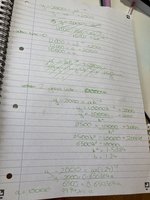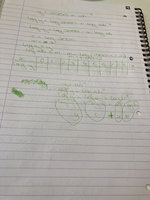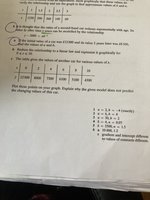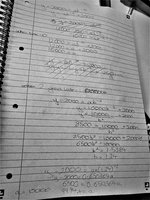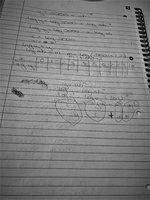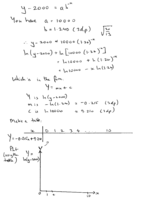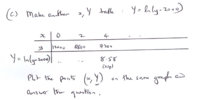I have looked at your question. I have to admit that the problem itself looks somewhat odd to me. "It is thought that." Does that mean that we are to assume that it is true. "Linearize" a model that is not linear is a strange expression. "Explain why the given model does not explain the changing values of this [different] car." There could be a million reasons why the model is wrong for a different type of car. I presume that they mean something more restrictive, but it seems mysterious to me.
Thank you for showing your work. Unfortunately, I have some difficulty reading your work because the green ink is quite faint on my screen.
But what I saw on the first page looks good.
a = 10000.
b = 1.24
[MATH]y = 10000 * 1.24^{-t} + 2000 \implies y \approx 8500 \text { if } y = 2.[/MATH]
Your second page does not look good.
[MATH]y = u + v \implies log_{\text {any}}(y) = log_{\text {any}}(u + v) \ne log_{\text {any}}(u) + log_{\text {any}}(v).[/MATH]
Now if I were going to substitute a linear model, I'd calculate the values of the exponential model for year end 0 through 10 and use multiple regression to find the line of best fit. Is that what they want you to do?

